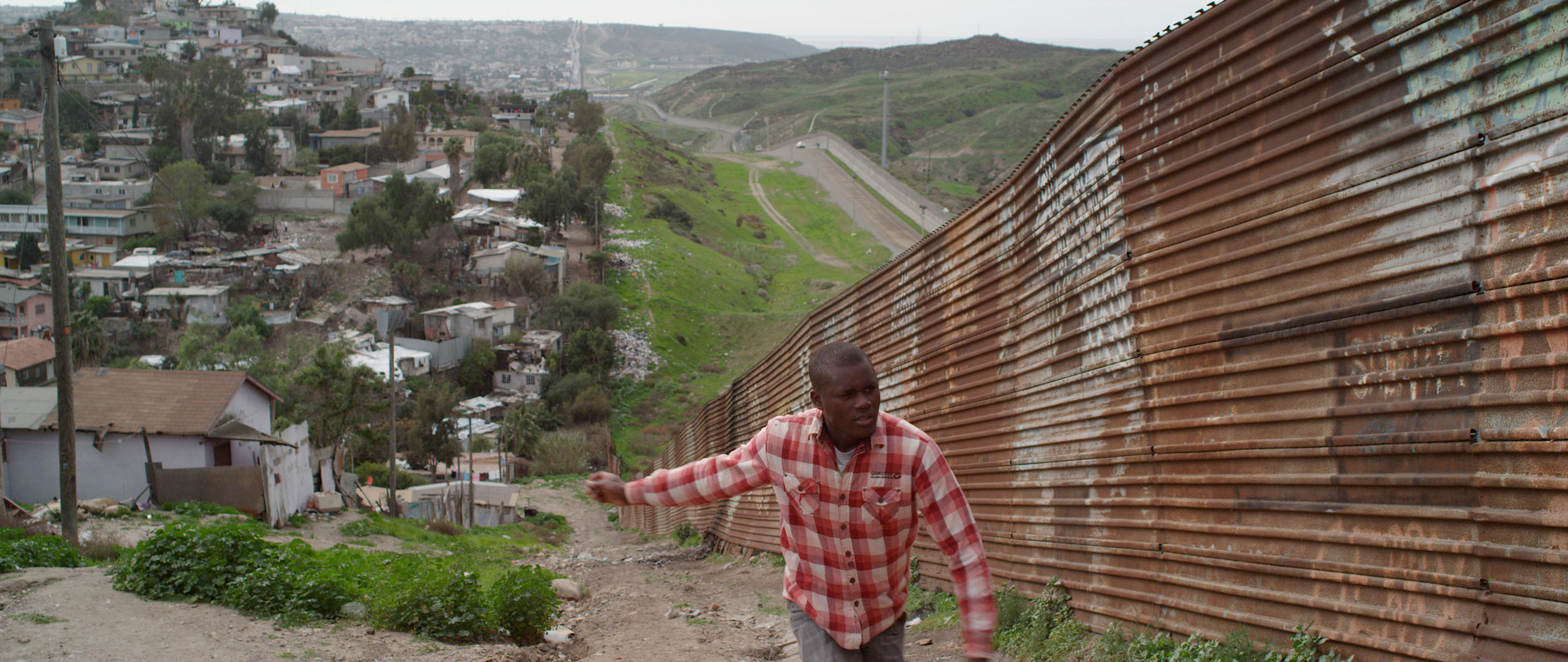Humanizing Migration in the Americas - Rachel Cantave screens Chèche Lavi
On March 4, professor Rachel Cantave (International Affairs) hosted a screening of
the documentary film Chèche Lavi (2019) followed by a conversation. The event drew over one hundred Skidmore and
Saratoga Springs community members, with students in the majority. International
Affairs major Evan Little, '22, reports.
The 2019 documentary feature, Chèche Lavi -- filmed by Sam Ellison and produced by an international team including Abraham Ávila , Rachel Cantave, and Nora Mendis -- offers a visually compelling and intimate view of Haitian migration by documenting the experiences of Robens and James, the film’s two protagonists.
Watch the trailer for Chèche Lavi (Vimeo)
Listening to the two, viewers share in the story of friendship and challenge that each man faced when trying to enter the United States having after having lived and worked in Brazil. The film shows a personal side that is often forgotten in popular media coverage. In its attention to the day-to-day difficulties faced by individuals trying to reach a hopeful future by way of an uncertain path, the filmmaking team brings out into the open a hemispheric immigration network, inviting questions rather than proposing answers.
In the film, James and Robens find themselves in limbo at the US-Mexico border after a long journey in search of work —from Haiti to Brazil, and Brazil to the border—following the devastation of the 2010 earthquake in Haiti. They arrive at a moment of tightening US immigration policy and the coming election of Donald Trump. Trump’s even more restrictive policies heighten the uncertainty for the futures of Haitian immigrants at the border. The film follows the two men as they walk the streets, seek employment, talk with fellow migrants, and attend church services, sharing with viewers a range of perspectives on how to grapple with these troubling times.
Still from Chèche Lavi (2019) Robens at the border wall.
Details of the experience of immigrants extending beyond fact-based reporting are beautifully interwoven into the visual and sonic fabric of the film. Robens and James' anxious waiting is turned into a contemplative durational viewing experience. As seen in these stills, sequences of vividly colored city streets and expansive natural landscapes juxtaposed with house and border walls, create a sense of suspension and stillness that parallels the endurance the protagonists experience in waiting for answers.
Still from Chèche Lavi (2019)
Following the film, audience members participated in a Q&A with Professor Cantave, a Haitian-American anthropologist and Haitian Creole speaker who has done extensive field work in Brazil, who joined the Skidmore faculty in September 2019. Students, in particular, were eager to learn the current whereabouts of Robens and James. Their questions made clear how the film had succeeded in connecting the audience to the personal journeys shared through the filmmakers’ storytelling by building empathy and understanding.
The Chèche Lavi team at the Guadalajara Film Festival.
Prof. Cantave is seated far right.
In their comments, members of the audience expressed their frustrations and outrage for the callous bureaucracy of the immigration system. An especially memorable moment was when a Saratoga community member urged the audience to vote and encourage policymakers to give due attention to these issues.
The immediate change to anti-immigration policies sought by both of the film's protagonists and echoed by the audience, however, in reality is confronted by slow-moving politics.
Hoping to inspire such changes, Chéche Lavi illuminates the striking ambition of young immigrants to control their futures while faced with the perils of contemporary immigration. Pairing these conflicting ideas with the film's visual lyricism works to humanize perspectives on immigration.

